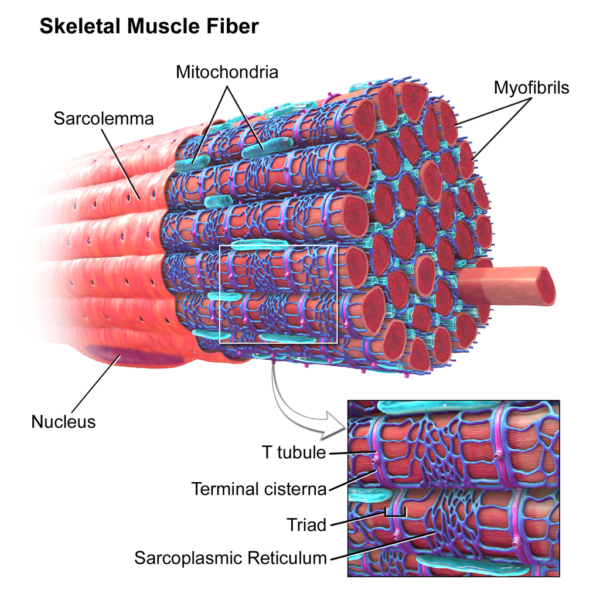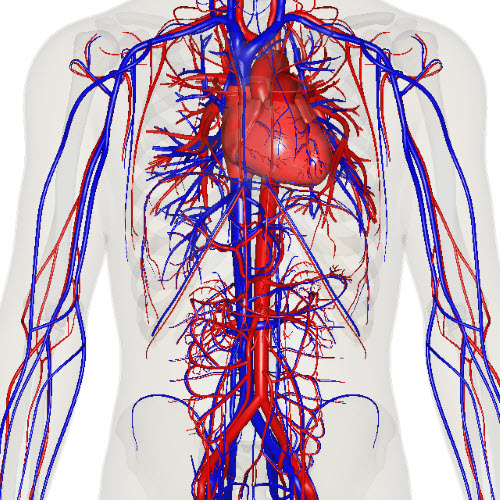How to get an A in anatomy and physiology

Exercise physiology requires neural, cardiovascular and endocrine system response, photo by Andrey Burkman/Shutterstock.com
The secret to getting an A in anatomy and physiology is to understand the physiology first. Learning the anatomy is simpler if you think of it as a 3D printout of the physiology. Learn human physiology by starting with how the 3 master controllers, nervous, endocrine and cardiovascular system, partner to maintain each anatomic part of the body. There is a logic to how the master controllers work with each other. Running is just one example of cardiovascular, nervous and endocrine systems working together to synchronize anatomic systems to create an effect.
Have you ever wondered what people are talking about when they refer to “physiologic cause and effect”? Physiologic cause and effect is a description of how the body’s 3 Master Controllers respond to any part of the system moving away from its normal set point. If you are struggling with the physiology part of your anatomy and physiology course, an online crash course named the “30-Day Challenge: Craft Your plan for learning physiology” taught by a physiologist with more than 30 years’ experience helping beginners in the field like yourself could be just what you are looking for.
Click here for the details. We call it a challenge course, because we are certain you can create a life-long plan for mastering human physiology in just 30 days that will get the grade you need and be useful the rest of your career in medicine. Discover how the human body’s 3 Master Controllers coordinate its management of exercise, the fight-or-flight response, blood pressure, the structure of your living skeleton and much more. Come away with a strategy to learn physiology of each body system fast.
Curriculum of 30-Day Challenge Course
Essential Ideas in Physiology
- Physiologic compartments
- Feedback loops
- Water’s chemistry
- Molecular mobility
- 3 Master controllers
- Set point preservation
- Interface with earth’s atmosphere

Even a single skeletal muscle fiber is composed of many physiologic compartments, Blausen/Wikimedia Commons
Design of the Nervous System
- Sensing the environment
- Spread of information inside the brain
- Brain’s skeletal muscle motor output
- Spinal Reflexes
- Exercise: nervous/cardiovascular collaboration
- Fight-Or-Flight: Collaboration of 3 master controllers
Cardiovascular System Basics
- An exceptional liquid recirculating system
- Muscles of the heart
- Source of heart’s electricity
- Frank-Starling Law of the heart
- Neural support of blood pressure
- Kidney preservation of optimal blood volume
- Vascular transfer of nutrients and waste
Endocrine System Organization
- Elements of the endocrine system
- Brain’s partnership with the endocrine system
- Neuroendocrine feedback loops
The last two sections of “30-Day Challenge: Craft Your Plans for Learning Physiology” leads you through how to create your own strategy for learning physiology of every anatomic system using the information gained here about how the 3 Master Controllers work in partnership. It uses the bone system as an example. Once you have your plan and strategy and use the formula learned here, filling in the correct answers on exams and getting an A in anatomy and physiology will be possible.
Learning Physiology of Bone
- Anatomic and functional compartments
- Endocrine effects at bone
- Neural regulation of bone
How to Study for Success
- Syllabus and check lists
- Learning strategies
- Additional Resources
Further reading:
30-Day Challenge: Craft Your Plan for Learning Physiology
3 Simple Secrets to Learning Physiology
Do you have questions?
Send me an email with your questions at DrReece@MedicalScienceNavigator.com or put them in the comment box. I always read my mail and answer it. Please share this article with your fellow students taking anatomy and physiology by clicking your favorite social media button.
Margaret Thompson Reece PhD, physiologist, former Senior Scientist and Laboratory Director at academic medical centers in California, New York and Massachusetts is now Manager at Reece Biomedical Consulting LLC.
She taught physiology for over 30 years to undergraduate and graduate students, at two- and four-year colleges, in the classroom and in the research laboratory. Her books “Physiology: Custom-Designed Chemistry”, “Inside the Closed World of the Brain”, and her online course “30-Day Challenge: Craft Your Plan for Learning Physiology”, and “Busy Student’s Anatomy & Physiology Study Journal” are created for those planning a career in healthcare. More about her books is available at https://www.amazon.com/author/margaretreece. You may contact Dr. Reece at DrReece@MedicalScienceNavigator.com, or on LinkedIn.
Dr. Reece offers a free 30 minute “how-to-get-started” phone conference to students struggling with human anatomy and physiology. Schedule an appointment by email at DrReece@MedicalScienceNavigator.com.




